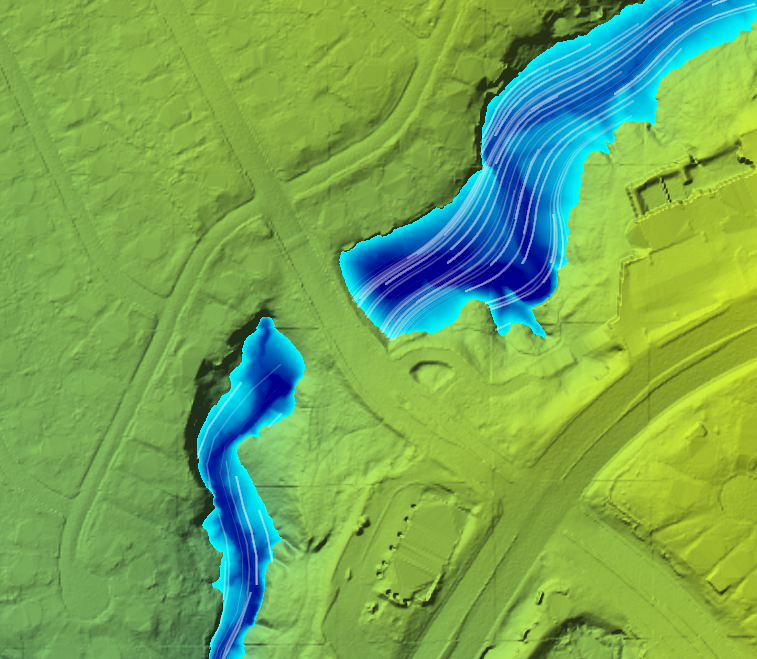HEC-RAS 6.0 Bridges Through Elevated Terrain
The problem: Currently RAS cannot model bridges through terrain embankments in a full 2D environment. This problem does not occur at locations where the terrain has been burned out. One solution of course would be terrain modifications, however that could be excessive and since the bridge utilizes the underlying terrain for its 4 cross sections, it would be important for that information to be accurate. The final question here would be to look at the scope of your project and determine if this work around I will be presenting is worth utilizing for your needs or if terrain modifications or cell adjustments to ignore the bridge work better for you as the engineer.
First I attempted to over ride the internal bridge XS’s. RAS auto generates cross section elevation data based on the distance the user enters away from the deck and the internal XS’s are a product of its geolocation relative to the ground. Therefore the 2 internal XS’s have no capacity since they straddle the top of the deck.
The Solution: The problem here is the cells within the vicinity of the bridge are recognizing elevations for which flow cannot pass and therefore ignoring the bridge element entirely. First you still need to override the internal XS’s in the bridge editor. Next, in RAS Mapper, add a refinement region for which the cell size is larger than that of the model… the goal here is to trick RAS into ignoring those high elevations of the bridge deck in the terrain and rather utilize the generated bridge curves based on the hydraulic properties of the bridge.
You will have to go back into the geometry data editor to check if there were odd cell variations occurring because of this cell orientation. You will also have to double check continuity error and the associated time step to make sure you are satisfying the Courant condition for the equation you are utilizing. The image below shows flow now being able to pass with odd cell orientations surrounding the bridge. Again, on a case by case basis the engineer must decide if this process is best for their scope. This resulted in an acceptable 0.0089% error
If anyone has anything else to add or suggest to this please feel free to let me know. Even if you disagree, I would like to know why and discuss.

